Palazzo Buonaccorsi
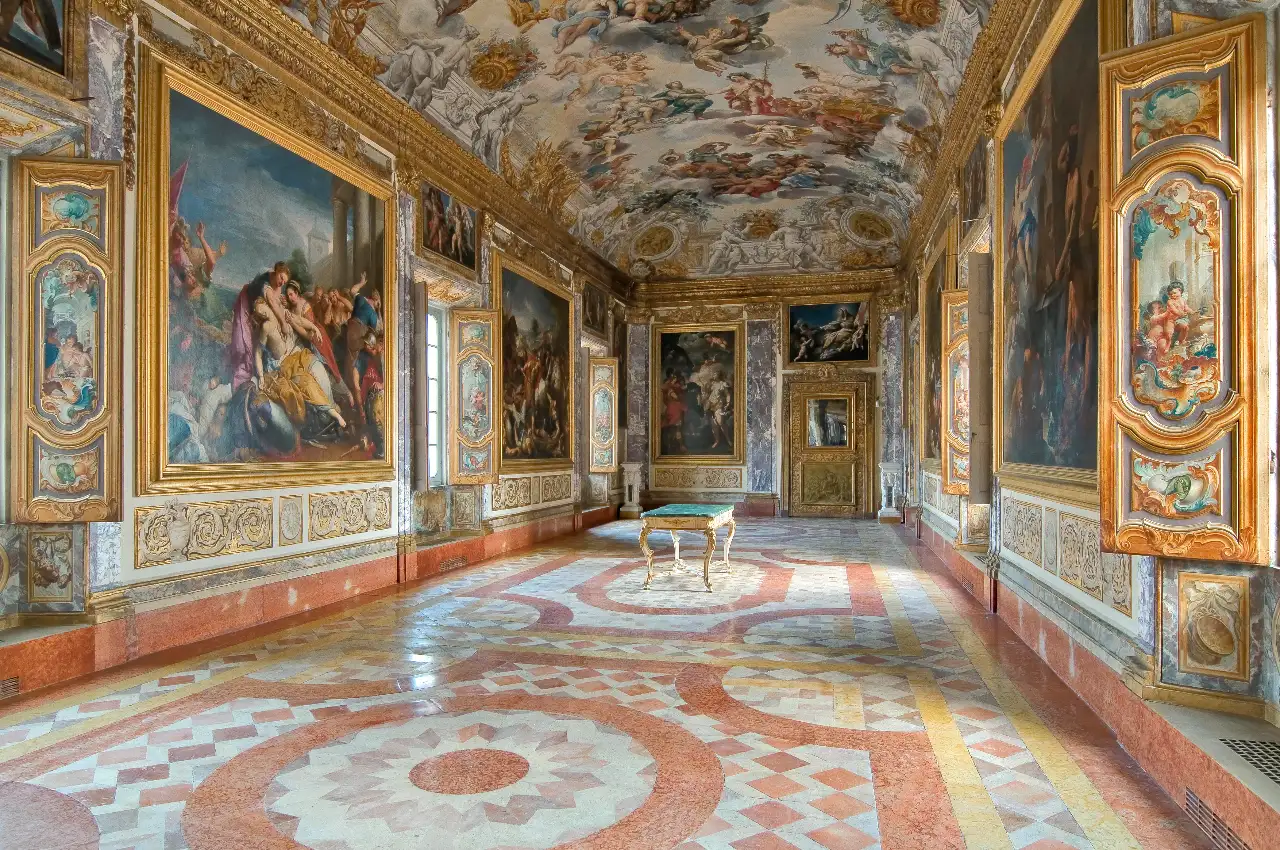
← back to Macerata museum network
Palazzo Buonaccorsi, seat of the Civic Museums, is located in the heart of the historic center of Macerata. Commissioned by the noble Buonaccorsi family, it is one of the most representative buildings of private construction of the eighteenth century.
It houses three distinct collections: the Carriage Museum in the underground rooms, the Ancient Art section with the prestigious Aeneid Gallery on the first floor and the rich collection of Modern Art in the rooms on the second floor. On the ground floor, next to the Bookshop, there is an area for temporary exhibitions. The construction of the palace is the result of complex building events which saw, starting from 1697, the aggregation of pre-existing buildings based on a project by the Roman architect Giovan Battista Contini, a pupil of Gian Lorenzo Bernini. In 1718 the intervention of Ludovico Gregorini completed the building with the construction of the internal courtyard and the Italian garden of which the balustrade with the ornamental vases by Antonio Perucci and the three statues depicting Hercules victorious in Istrian stone remain, work by the Venetian sculptor Giovanni Bonazza (1654-1736).
History of Palazzo Buonaccorsi
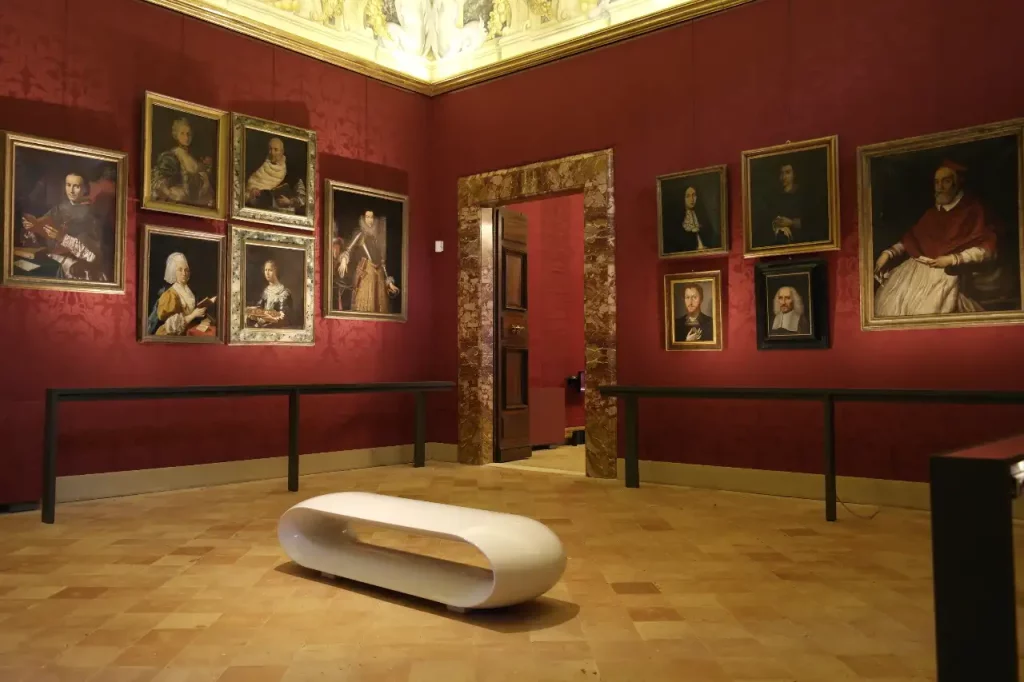
The Buonaccorsi family, following the attainment of the city patriciate in 1652 and the investiture as count of Simone Buonaccorsi in 1701 by Clement XI, is fully inserted among the wealthiest families of Macerata. The palace, started by Simone (1624-1708) and continued by his son Raimondo (1667-1743) with the support of his brothers, is inspired by the Roman noble residences and is characterized by a structure open on three sides towards the surrounding countryside. The courtyard, the loggia and the halls, the coffered ceilings and the mythological paintings of the noble apartment give the building a sumptuous elegance. Precisely the rooms on the main floor, where the section of Ancient Art is located, retain their decorative richness, each named after the theme depicted in the pictorial frieze: the Room of Romulus and Remus, the Room of Bacchus, the Room of Hercules, are only a part of the rich ornamental repertoire of the building which culminates with the sumptuous Aeneid Gallery. Along the way there is also a small chapel, once destined to the private devotion of the Buonaccorsi family, with the vault frescoed by Niccolò Ricciolini in which God the Father stands and on the altar a painting by Carlo Antonio Rambaldi depicting San Domenico and San Francesco.
The building was purchased by the Municipality of Macerata in 1967 and used as a venue for cultural events and the Academy of Fine Arts, which carried out its activity here until 1997. After a careful restoration that led to the complete recovery of the historic building, it is intended to house the museum collections that were kept in the former Jesuit College, now the seat of the Mozzi Borgetti Library.
Carriage Museum
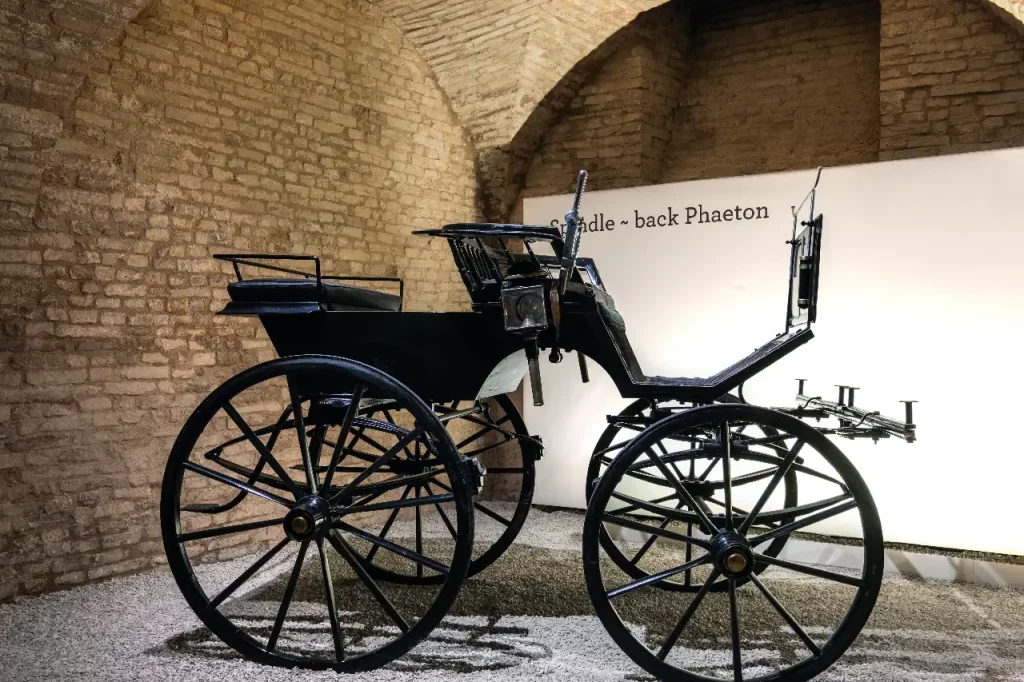
The Carriage Museum was established by the Municipality of Macerata in 1962 following the large donation made by Count Pier Alberto Conti of Civitanova Marche (1884-1968) and supported by the local Lions Club. The original core is made up of six sports models, Spider Phaeton, Mail Phaeton, Jardinière, Gran Break de Chasse, Stanhope-Gig, Break and the subcompact Skeleton Break. Included in the donation is a rich series of saddles, bits, whips, bridles, horseshoes, harnesses for bindings, four or six, as well as books, horse racing manuals, prints and vintage photographs. Over time the Museum has grown considerably thanks to new bequests.
Today the exhibition includes twenty-four cars along a fascinating route divided into thematic areas. The tour is enriched by interactive installations that involve the visitor in the experience and atmosphere of the carriage ride.
In the following years, other sports or service carriages were added to the first group, donated in 1968 by the Ceccaroni Morotti Cambi Voglia, by Giuseppe Guarnieri-Roberti, by Giorgio Sinistrario, by the Ciofi degli Atti family and by Luigi Pianesi from Macerata.
The museum also preserves an eighteenth-century hand sedan, used for the transport of ladies (donation by Filippo Castellani 1968), and a nineteenth-century carriage model Wourche, donated in 1981 by the Pietramellara family and belonging to the marquis Filippo Castiglioni Pietramellara, built in the workshop of Vincenzo Macerata. Pacchella. Two other children’s carriages, dating back to the 1920s, have enriched the precious collection over the years.
With the transfer of the collections of the Civic Museums from the former Jesuit College to Palazzo Buonaccorsi, the carriages have found a new arrangement in the basement where the service rooms were once located near the stables. The new museum was inaugurated on 8 December 2009 and is unique in the panorama of museums in the Marche and central Italy.
Discover the “Museum of the Carriage” route
Ancient art
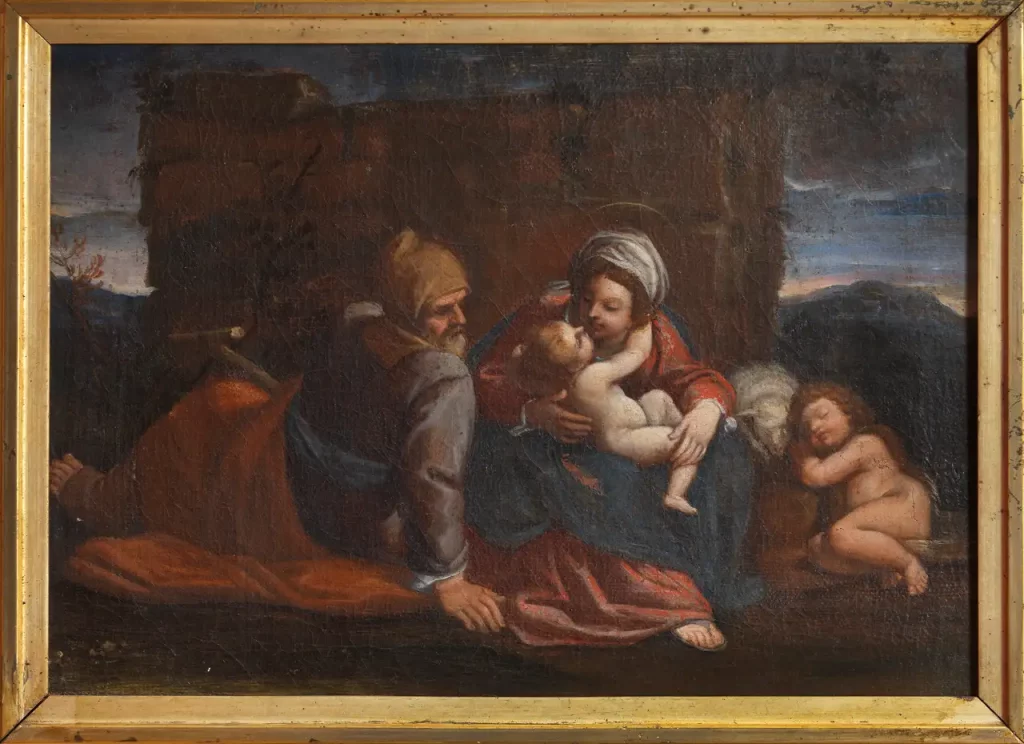
The Ancient Art collection includes paintings, sculptures and precious objects from the fifteenth to the eighteenth century. The donation of Tommaso Maria Borgetti, dating back to 1835, constitutes the first group of paintings in the Pinacoteca. Subsequently, in 1860, the painter Antonio Bonfigli donated 26 paintings for the establishment of a “Pinacoteca patria” which, since 1937, together with other pre-existing paintings, found its first arrangement in the rooms of the former Jesuit College, now the seat of Mozzi Borgetti Library. To these donations are added the bequests of the Cesare Filippucci and Costa Ciccolini Irene collections, as well as a substantial number of works from churches and convents, which came to the Municipality at different times, and the series of paintings by the Academicians of the Catenati.
In the rooms of the noble floor, works by Giovanni di Corraduccio, Carlo Crivelli, Giovanbattista Salvi known as Sassoferrato, Carlo Dolci, Michele Rocca known as Parmigiano, Domenico Corvi, Carlo Maratta, Alessandro Turchi known as Orbetto are exhibited. Paintings of Flemish, Italian, Neapolitan and Venetian art, together with portraits of illustrious Macerata artists, complete the interesting and valuable collection. The Ancient Art collection was inaugurated in the new headquarters of Palazzo Buonaccorsi in 2014.
Discover the “Ancient Art” route
Aeneid gallery
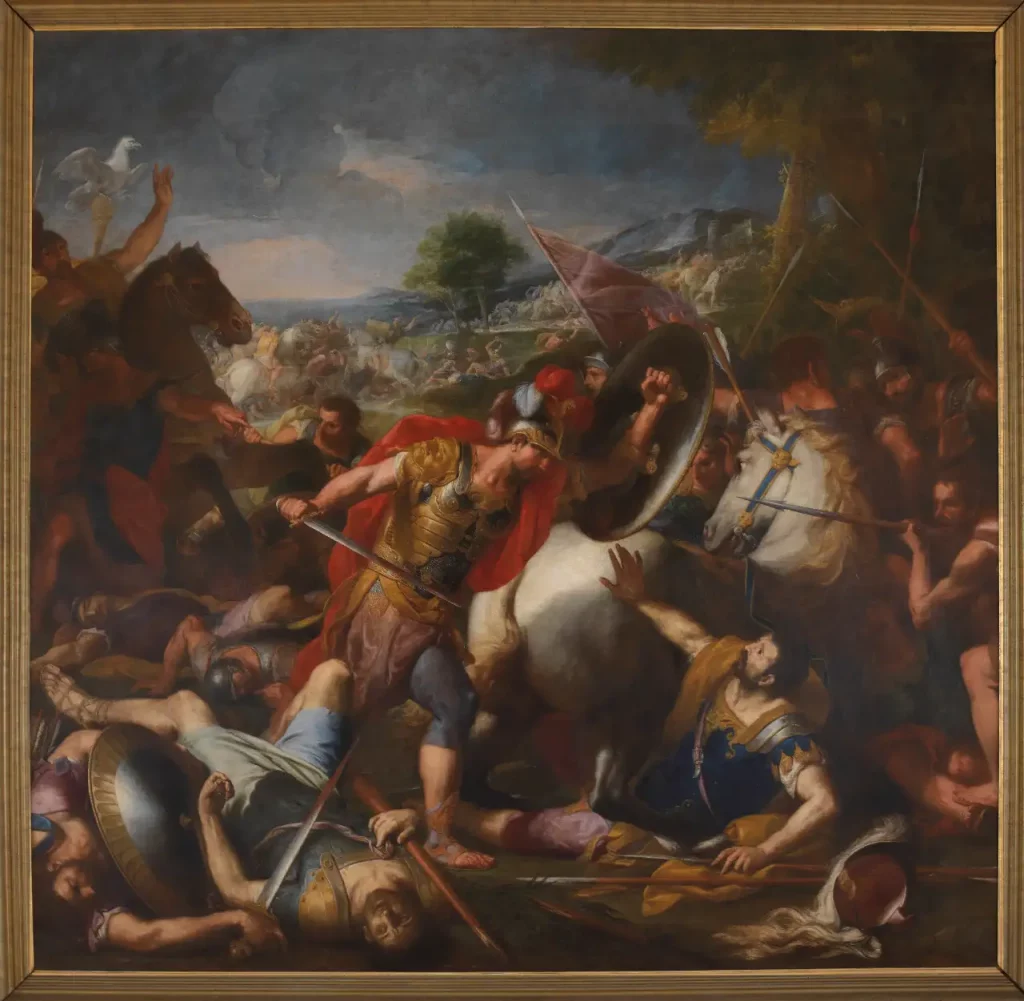
The Aeneid Gallery is one of the most complete examples of late Baroque decoration in central Italy. The project was conceived by Simone Buonaccorsi (1624-1708) and continued by his son Raimondo (1667-1743). No detail of the great hall is left to chance. The decoration of the entire environment responds to a unitary project that has seen the involvement of various workers and artists from the major centers of Italy. The presence of Venetian, Bolognese, Roman and Neapolitan painters has made the Gallery a true anthology of painting in the eighteenth century. On the vault the Marriage of Bacchus and Ariadne is frescoed, made by Michelangelo (Rome, 1654 – Frascati, 1715) and Nicolò Ricciolini (Rome, 1687 – 1772). Along the walls there are canvases with the representation of the Stories of Aeneas, taken from Virgil’s Aeneid, a grandiose cycle that aims to celebrate the deeds of the Virgilian hero. The room is completed by canvases with Putti with insignia and emblems and the allegorical cycle of the months and the signs of the zodiac painted on the shutters of the windows and doors.
Modern Art
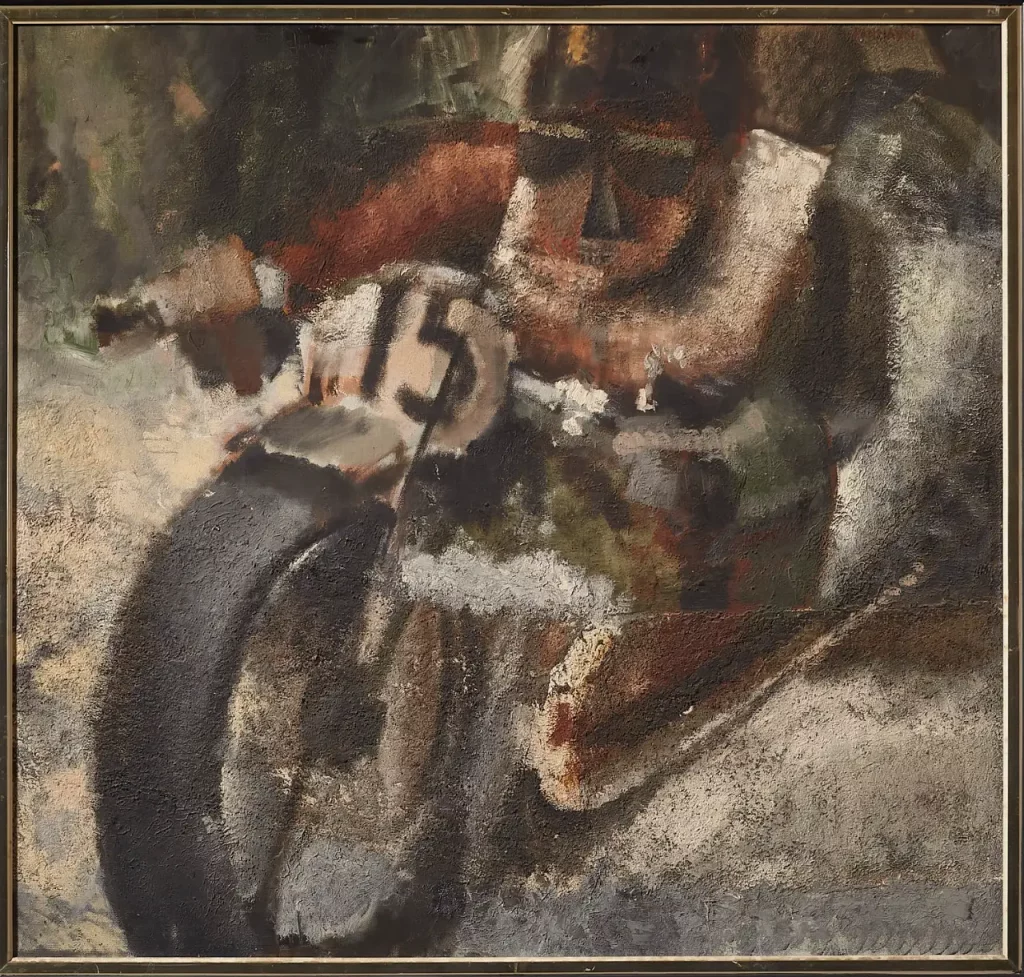
The collection of modern art begins with a group of paintings by Gualtiero Baynes (Macerata, 1856 – Florence, 1938) and artists linked to nineteenth-century figurative culture, such as Ciro Pavisa, Cesare Peruzzi and the sculptors Giovanni Battista Tassara and Giuseppe De Angelis. The itinerary continues with the developments and various trends of the twentieth century, the result of the “historical sedimentation” of works from the local futurist activity in the 1910s and 1920s. From the work of the “Boccioni” Group (1932-1944) and the three national awards for contemporary painting “Scipione” (1955, 1957, 1964), to the events promoted by the Amici dell’Arte up to the national and international relations entertained in the seventies by Elverio Maurizi. The collection is also enriched by purchases made by the municipal administration as well as by donations from Italian and foreign artists on the occasion of personal exhibitions.
An entire section is dedicated to the artist Ivo Pannaggi, architect, painter and designer, born in Macerata in 1901, exponent of Futurism. After moving to Germany at the end of the 1920s, Pannaggi settled in Norway where he continued his business and carried out various architectural and interior design projects, returning to Italy in 1971. The furniture from the Anteroom of the House is exhibited in the Pinacoteca. Zampini, one of the first examples of futurist interior architecture, the Salottino by Eura Pannaggi, as well as paintings, models and studies of the works carried out over the years until his death in 1981.
The modern art collection was inaugurated in the new headquarters of Palazzo Buonaccorsi in 2014.
Discover the “Modern Art” path
Timetables
November/March:
from Tuesday to Sunday, 10:00 – 13:00 / 15:00 – 17:30 (last entry 30 minutes before)
April, May and October:
from Tuesday to Sunday, 10:00 – 13:00 / 14:30 – 18:30 (last entry 30 minutes before)
June, July, August, September:
from Tuesday to Sunday, 10:00 – 13:00 / 15:00 – 19:00 (last entry 30 minutes before)
September:
from Tuesday to Sunday, 10:00 – 13:00 / 15:00 – 19:00 (last entry 30 minutes before)